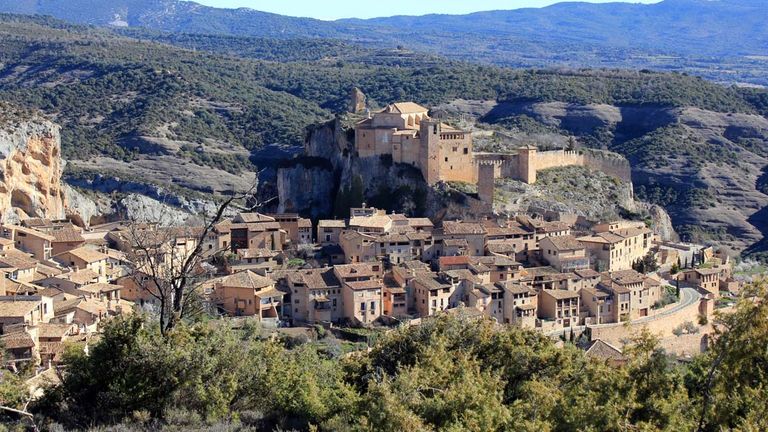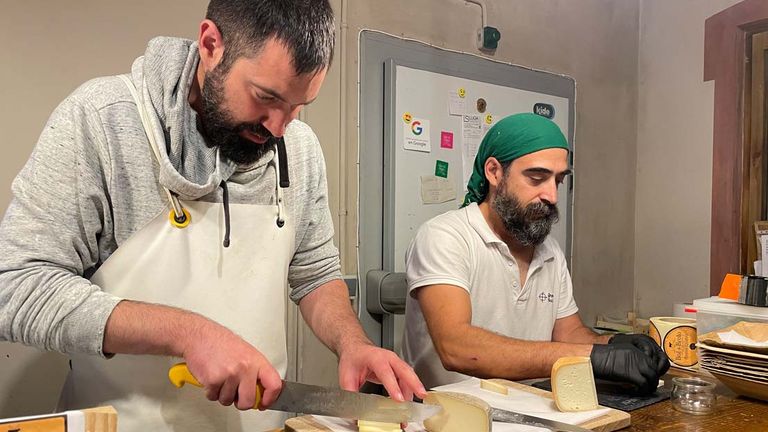Nestled in the valleys between the majestic peaks of the Pyrenees, the Aragon region might as well be Spain’s last undiscovered treasure, barely known outside the country. Until now, Aragon's Tourism Board had never advertised the region to North American travelers — yet it has a lot to offer.
Blessed with beautiful nature, much of which is preserved in national parks, Aragon is a poster child for pristine landscapes, where cascading waterfalls rush down deep canyons and glacier peaks overlook green meadows. Down in the valleys, ageless medieval villages dot the landscape, centuries old vineyards and olive groves hug the hills and family-owned restaurants use recipes perfected for generations, with produce and dairy harvested from their own farms.
“In Aragon, Americans travelers will uncover a Spain they never knew existed — where medieval villages stand untouched by time, the Pyrenees whisper adventure at every turn and ancient traditions come alive in vibrant festivals,” said Carmen Galan, media and marketing specialist at Tourist Office of Spain in New York and an Aragon native. “In Aragon, every road leads to an undiscovered story.”
Here are a few places to visit to avoid the summer crowds of Madrid and Barcelona, enjoy the cooler, mountainous weather and revel in pristine nature.
Zaragoza
Located half-way between Madrid and Barcelona, Aragon’s capital, Zaragoza, is known for its mix of Romanesque, Gothic, Baroque, and Renaissance architecture, as well as its Mudejar decor— a unique blend of Islamic and Christian art influences. Steeped in history, Zaragoza boasts numerous treasures, including the 11th-century Aljafera Palace, reminiscent of Alhambra Palace in Granada.
 Aljafera Palace in Zaragoza, Aragon’s capital city
Aljafera Palace in Zaragoza, Aragon’s capital city
Credit: 2025 Zaragoza TurismoUncommonly for a somewhat smaller city, Zaragoza maintains, not one, but two cathedrals — Cathedral of the Savior and Cathedral-Basilica of Our Lady of the Pillar, where, as the legend goes, Virgin Mary had once appeared standing on the pilar, which remains carefully preserved today. Two notable museums include the famous Goya Museum and the lesser known, but no less impressive, Pablo Gargallo Museum. Best of all, you won’t have to stand in line.
Alquezar
Walking through Alquezar’s narrow cobblestone streets, wide squares and low overhanging arches feels like traveling back in time — and that’s not an overstatement. The village dates to the ninth century with houses still intact; many have been converted into family-owned bed-and-breakfasts, restaurants and cafes.
A path by the edge of the village leads down to the River Vero Canyon and over a series of walkways hanging over steep cliffs and waterfalls, down to a valley, and back to town through an olive grove. The wars of the 20th century left Alquezar nearly abandoned, but now it’s enjoying a comeback.
 Some of Alquezar’s original structures have been converted to restaurants and bed-and-breakfasts.
Some of Alquezar’s original structures have been converted to restaurants and bed-and-breakfasts.
Credit: 2025 Gobierno de Aragon“It was one of the poorest villages in Spain as its people left to work in the big cities,” said Alba Cruells, founder of tour company Spain Insights, who lives in the region and builds custom tours. “Now it’s completely turned around.”
Buera
This tiny quaint medieval village feels frozen in time — residents still keep chickens and grow fruit and vegetables in their gardens. Stop for dinner at Nyibeta Degustacion which features a long list of high-end tapas, including traditional treats such as fideua de pulpo — an octopus dish with short noodles — a variation of paella. The village also features an 18-century olive oil press inside an olive oil museum.
Ordesa and Monte Perdido National Park
Stretching along the border of Spain and France, Ordesa and Monte Perdido National Park has it all — glacier peaks, deep canyons, cascading waterfalls, blooming meadows and endless forests.
 Quesos Bal de Broto offers a cheese tasting.
Quesos Bal de Broto offers a cheese tasting.
Credit: 2025 Lina ZeldovichThrill-seekers will love the Tirolina-Ordesa zipline, allegedly the longest in Europe and the fastest in the world with a speed of nearly 100 miles per hour. The Alpine meadows make perfect pastures for local cattle, resulting in the freshest dairy and cheeses. After hiking in the park, stop by Quesos Bal de Broto, which makes several types of cheeses for a tasting and tour of their cellar.
Canfranc Estacion
Built in the 1920s to connect Spain and France through the Pyrenees, Canfranc Estacion was the second-largest railway station in Europe, facilitating tourism and trade. Built to impress, it had once been called the Titanic of the Mountains. But when train travel declined by the end of the 20th century, the station withered too. Almost a century later, it was revamped into a five-star hotel, welcoming its first guests in 2023. With a former concourse serving as a reception desk, the hotel features a spa and Michelin-star restaurant set inside a gilded train car.
Aptly christened Canfranc Express, the restaurant sources its produce, meat, dairy and wine from local growers and winemakers — a perfect blend of modern luxury and timeless traditions, like Aragon itself.